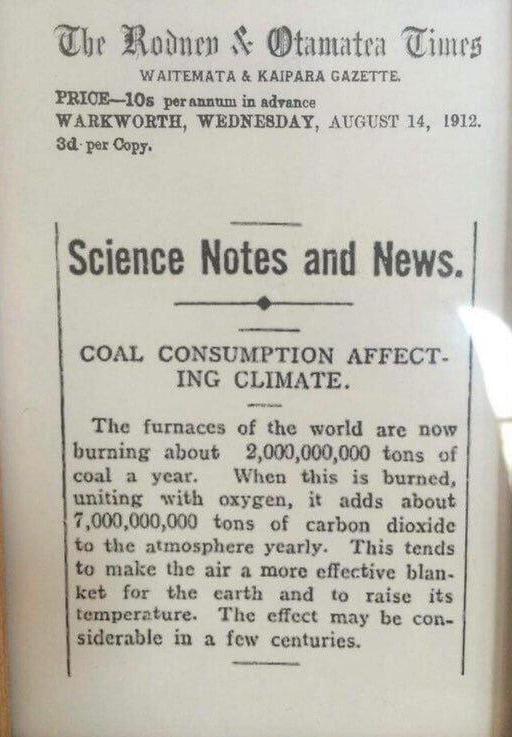
kscarbel2
Moderator-
Posts
18,854 -
Joined
-
Days Won
114
Content Type
Profiles
Forums
Gallery
Events
Blogs
BMT Wiki
Collections
Store
Everything posted by kscarbel2
-
Mack Australia always has better looking and higher quality grilles and hoods.
-
Your truck indeed is a piece of Mack history that must be preserved (stored indoors at all times). While the CAS58 F-model two-man double bunk (high roof) cab was common on FMs shipped overseas, it was never sold in the US market.
-
So you have an oddball truck, 1 of only 15 made with disc brakes. And it does not have the standard M917 Rockwell axles, 20,000lb FDS-1807 front and 58,000kb SUHD bogey. Any casting numbers on the rotors? I would call the folks at Axletech...877-877-9717 (a descendant of Rockwell International, the auto business was spun off forming Meritor). Axletech is small enough they might provide the materials list (BOM) for that order.
-
-
I never heard of an M917* (AM General) with disc brakes. Also never heard/saw a M917A1 or A2 Freightliner with other than drum brakes. * For those unfamiliar, this is the first generation AM General-produced M917.........http://www.oshkoshequipment.com/products/detail/2/2535/M917-20-Ton-8x6-Military-Dump-Truck-D-300-80#
-
Trump and Immigration (Illegal Immigrants in the US)
kscarbel2 replied to kscarbel2's topic in Odds and Ends
I think having the ability to speak one or more foreign languages is an asset. However, relating to legal immigrants (the only kind that should be here), they should subjugate to the American way of life......and that includes adopting English as their primary language. If I was king for a day, I would have English declared the official language of the United States......because it should be. I assume this murderer is an economic (illegal) migrant. He didn't come here to stay and become an American, rather he came here for a temporary period of time to profit and send money back home. He has no intention of spending the bulk of his untaxed earnings in the US. -
https://en.wikipedia.org/wiki/Thermal_spraying
-
Trump and Immigration (Illegal Immigrants in the US)
kscarbel2 replied to kscarbel2's topic in Odds and Ends
Iowa student Mollie Tibbetts killed by illegal alien Associated Press / August 21, 2018 A illegal immigrant from Mexico has confessed to kidnapping college student Mollie Tibbetts while she was jogging in her small Iowa hometown, killing her and dumping her body in a cornfield. Cristhian Bahena Rivera, 24, was arrested and charged with first-degree murder in the death of the 20-year-old Tibbetts, whose July 18 disappearance set off a massive search involving state and federal authorities. Rivera led investigators early Tuesday to a body believed to be Tibbetts in a cornfield about 12 miles (19 kilometers) southeast of Brooklyn, Iowa, where Tibbetts was last seen running, Division of Criminal Investigation special agent Rick Rahn said. Rivera is being held at the sheriff's office in Montezuma on $1 million cash-only bond. President Donald Trump noted the arrest and called for immigration law changes at a rally in West Virginia. "You heard about today with the illegal alien coming in, very sadly, from Mexico and you saw what happened to that incredible, beautiful young woman," Trump told the crowd in Charleston. "Should've never happened. Illegally in our country. We've had a huge impact, but the laws are so bad. The immigration laws are such a disgrace, we're getting them changed, but we have to get more Republicans. We have to get 'em." Iowa's two GOP U.S. senators also described Tibbetts' death as a tragedy "that could have been prevented," and Iowa Gov. Kim Reynolds said residents were heartbroken and angry. "We are angry that a broken immigration system allowed a predator like this to live in our community, and we will do all we can to bring justice to Mollie's killer," said Reynolds, a Republican. Trump has claimed widespread crime by people living in the country illegally, citing among other things the indictments of 11 suspected MS-13 gang members from El Salvador charged in connection with the slayings of two Virginia teens. U.S. Immigration and Customs Enforcement (ICE) said that it lodged a federal immigration detainer for Rivera after he was arrested on the murder charge. That move means the agency has probable cause to believe he is subject to deportation. Investigators said they believed Rivera had lived in the area from four to seven years. Rahn described Rivera as someone who lived in a rural area and kept to himself. Investigators zeroed in on Rivera after obtaining footage from surveillance cameras in Brooklyn. The footage showed a Chevy Malibu connected to Rivera that was driving back and forth as Tibbetts was running in the area. Rivera admitted to investigators he got out of his car and started running alongside Tibbetts. Tibbetts grabbed her phone and said she was going to call the police. Rivera panicked and then said he blacked out. Rivera next remembers seeing her earphones on his lap, and taking her bloody body out of the trunk of his car. "The defendant further described during the interview that he dragged Tibbetts on foot from his vehicle to a secluded location in a cornfield. Investigators had earlier searched the area for Tibbetts but didn't find her, noting the body was covered by corn stalks when recovered early Tuesday. An autopsy would be performed on the body Wednesday by the state medical examiner's office, which would assist investigators in understanding whether Tibbetts had been assaulted or tried to fight him off. Rivera's initial court appearance is scheduled for 1 p.m. Wednesday in Montezuma. A conviction on first-degree murder carries a mandatory sentence of life in prison without parole in Iowa, which doesn't have the death penalty. . -
U.S. prosecutors say FCA wanted to 'buy labor peace' from UAW Automotive News / August 21, 2018 DETROIT — The U.S. says Fiat Chrysler Automobiles sought to "corrupt and warp" its relationship with the UAW to obtain advantages in contract agreements "in an effort to buy labor peace." The latest allegations in the ongoing federal corruption case involving FCA and UAW officials were reported Monday by the Detroit Free Press and The Detroit News. A 14-page memorandum of sentencing for Alphons Iacobelli, FCA's former labor relations chief, stated: "FCA sought to obtain benefits, concessions and advantages in the negotiation and administration of collective bargaining agreements with the UAW in an effort to buy labor peace. High-level officials of the UAW sought to enrich themselves and live lavish lifestyles rather than zealously work on behalf of the best interests of tens of thousands of rank and file members of their union." Iacobelli and others are accused of misusing funds intended for the UAW-Chrysler Training Center in Detroit. Iacobelli, the highest-ranking FCA official charged in the scandal to date, in January pleaded guilty to conspiring to violate the Labor Management Relations Act and for subscribing a false tax return. He could face eight years in prison under terms of a plea deal. He is scheduled to be sentenced Monday, Aug. 27. The memo also notes that, for certain aspects of FCA's negotiations and relationship with the UAW, Iacobelli reported directly to the automaker's late CEO, Sergio Marchionne -- though it doesn't mention Marchionne by name. It was the first time the government referred to Marchionne by title, the News reported. Last week, the News reported that Marchionne gave an expensive watch to UAW Vice President General Holiefield and failed to disclose the gift to federal investigators. Holiefield, who died in 2015, has been implicated in the scandal. His widow, Monica Morgan, pleaded guilty to one count of failing to file a tax return. She was sentenced to 18 months in prison in July. Others who have been charged are former FCA financial analyst Jerome Durden; former FCA employee Michael Brown; ex-UAW Associate Director Virdell King; UAW official Keith Mickens; and Nancy Johnson, a former top aide to ex-UAW Vice President Norwood Jewell, who was charged with misusing funds but has not yet been arraigned. Jewell has been implicated in the scandal but not formally named as a conspirator by investigators. Morgan, Iacobelli and Durden are also being sued by the UAW-Chrysler National Training Center to recover more than $4.4 million in damages.
-
Bob, it really was a great article. No fluff, just the facts....and they are facts. I agree with every sentence, each one an important point.
-
Vibration that 2 mechanics and Mack dealer can’t figure out
kscarbel2 replied to RobM626's topic in Engine and Transmission
Gee, do you think there's an issue there? -
Roof-top Wind Deflector
kscarbel2 replied to youngstown.bulldog80's topic in Exterior, Cab, Accessories and Detailing
What was Kenworth's product name for that proprietary electric deflector? Does anyone recall? -
The last time I flew Singapore Airlines to San Francisco, my miles bumped me up to first class at no charge, and there's Mark in first class with no less than three of their legendarily beautiful stewardesses chatting with him. And the subject of milk didn't come up.
-
Roof-top Wind Deflector
kscarbel2 replied to youngstown.bulldog80's topic in Exterior, Cab, Accessories and Detailing
Kenworth offered an electrically risen roof deflector for many years that was a sharp set-up. If you could find a used one.............. Airodyne is Paccar's supplier and they sell what you're looking for.........http://www.airodyne.com/fuel_savings.asp -
Roof-top Wind Deflector
kscarbel2 replied to youngstown.bulldog80's topic in Exterior, Cab, Accessories and Detailing
You're very welcome. Please let us all know how it turns out for you. -
Scania Group Press Release / August 20, 2018 Core deal with Corebon to enable top-class carbon fibre components Scania Growth Capital has invested SEK 35 million in Corebon AB, a Swedish materials tech start-up that has developed a revolutionary method for producing carbon fibre components. Corebon has invented the world’s fastest production process for carbon fibre reinforced plastic. This has resulted in a new higher standard of composite materials, lower costs and minimal impact on the environment. The patented process is based on induction heating, and it enables Corebon to produce carbon fibre components at significantly higher speed than through existing established methods. The quality of the carbon fibre components produced is also superior, and the energy consumption in production is considerably reduced. 10 times faster production cycle times Tobias Björnhov, founder and CEO, Corebon AB, says: “The Technology results in up to 10 times faster production cycle times, up to 95 per cent energy savings, and the highest fibre-volume fraction composites ever manufactured.” It all began over 10 years ago in the French Alps with a group of friends who had a passion for skiing and an idea for making better skis using carbon fibre. “We had limited financial assets so we needed to find a much faster and cheaper way to develop the skis,” says Björnhov. “We then discovered that we could heat the material they were made of from within instead of adding heat to the outside, using the carbon fibre contained in them as a heat source.” “Thanks to this technology, the heat can be controlled more easily, less plastic needs to be added, and a high fibre volume fraction is achieved”, says Rasmus Olsson, founder and CTO, Corebon AB. Wide range of products This method is applicable to a wide range of products in the automotive, telecommunication, aerospace and robotics industries. “We are in an acceleration phase and we are growing both our production capacity and our organisation. To have Scania Growth Capital as an investor, both with financial resources but also with their skills and experience, is extremely important to us.” Per-Arne Eriksson, Head of Customized Truck Development at Scania, will join the board of directors of Corebon. “The strategy has been to invest in companies that have strategic relevance to the ecosystem in which we operate and Corebon fits very well,” Eriksson says. “In the rapidly changing automotive industry, we see many opportunities to expand the use of carbon fibre composites to more applications as an enabler in product development, including in vehicle electrification.” .
-
Hold on, I didn't say the USDA was or wasn't accountable for anything. I never mentioned the USDA. That said, a manufacturer is responsible (accountable) for what it sells.
-
Roof-top Wind Deflector
kscarbel2 replied to youngstown.bulldog80's topic in Exterior, Cab, Accessories and Detailing
Rudkin-Wiley evolved into Airshield Corporation, which was acquired by Core Molding Technologies in 2001. Give them a call..... (614) 870-5012. Here's another one to call......http://www.spectrumcomposites.com/aerodynamic-deflectors/ -
I actually attended a party at Mark's Sausalito home. Did I say home? I think it has a larger floor plan than the White House.....couldn't find the front door. His view of the Golden Gate Bridge is breathtaking. Jerry Garcia (Grateful Dead) lives two doors down. He allowed some scenes of "The Presidio" to be shot there, met Sean Connery and still earns royalties from the picture.
-
Mack R754ST
kscarbel2 replied to j hancock's topic in Antique and Classic Mack Trucks General Discussion
Though not a pedigreed drivetrain, the R754s are a personal favorite. -
If Oshkosh did offer them to you Paul, their price would send you running. Why not buy NOS from a military vehicle surplus business? Just a suggestion, call George at White Owl Parts Co. (252-522-2586) in Kinston, North Carolina and see what he says. Super guy, honest and knowledgeable.
-
Heavy Duty Trucking (HDT) / August 20, 2018 Daimler Trucks North America LLC is recalling as many as 9,093 Freightliner Business Class M2 medium-duty trucks from the 2018 and 2019 model years for an incorrectly installed steering shaft assembly, according to federal records. The steering shaft assembly on the trucks may have been installed incorrectly, which can cause a loss of connection between the steering wheel and the front wheels. This increases the likelyhood of a crash. The Business Class line includes the M2 106, M2 112, and eM2 trucks and is available as a class 5-8 chassis cab truck. The M2 was the successor to the FL-Series trucks introduced in the 1990s. DTNA has notified owners, and dealers will inspect the steering assembly installation, repairing it as necessary, free of charge. The recall began August 9. Owners may contact DTNA customer service at 1-800-547-0712. DTNA's number for this recall is FL-781. Owners may also contact the National Highway Traffic Safety Administration's Vehicle Safety Hotline at 1-888-327-4236 (TTY 1-800-424-9153), or go to Safercar.gov.
-
Don't listen to him, he wants you to buy an MP8 only because he's a multi-millionaire Volvo stockholder. He bought Volvo shares in 2002 at $2.95 and sold a large stake last January near $21. Five homes, a car and truck collection, he doesn't like to talk about it. Running milk is just something to pass the time.
-
Cereal manufacturers have a responsibility to check the quality of the ingredients they buy.........quality control. Every car and truckmaker performs quality checks on what their suppliers provide. It's an essential part of manufacturing.
-
If you go to the top right corner of the BMT website and type "MP8" into the search box, you'll find a long list of posts related to your question. Also, you can use Google, and enter "MP8 problems".
BigMackTrucks.com
BigMackTrucks.com is a support forum for antique, classic and modern Mack Trucks! The forum is owned and maintained by Watt's Truck Center, Inc. an independent, full service Mack dealer. The forums are not affiliated with Mack Trucks, Inc.
Our Vendors and Advertisers
Thank you for your support!









